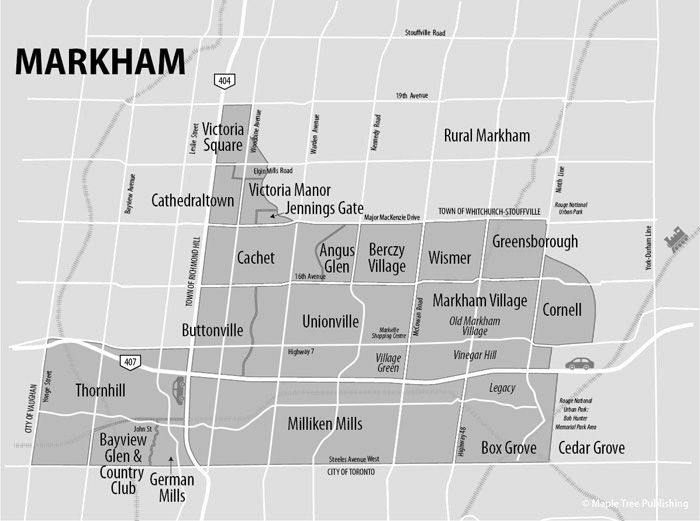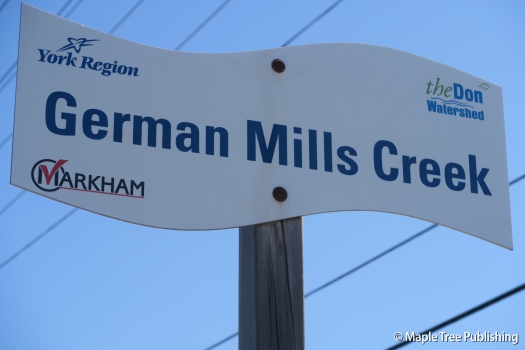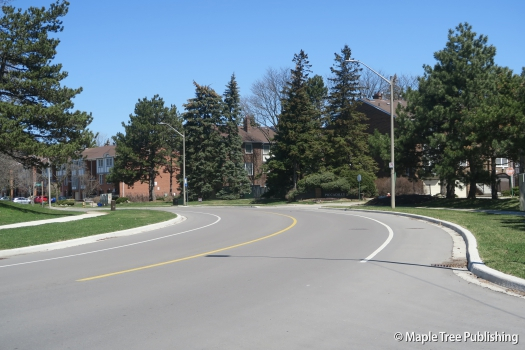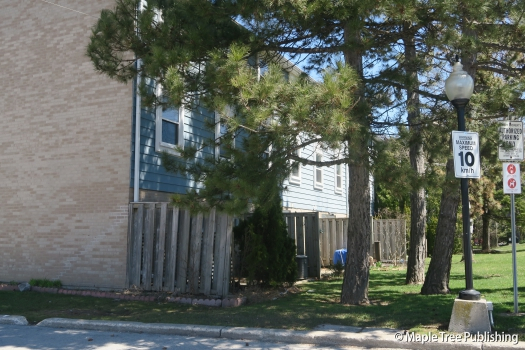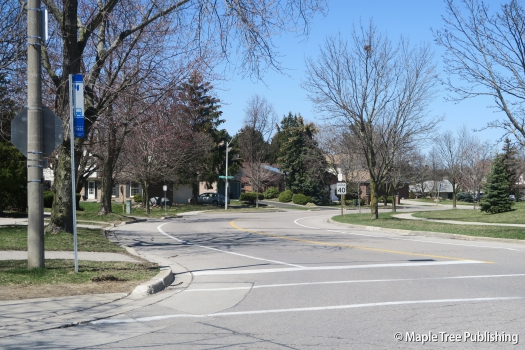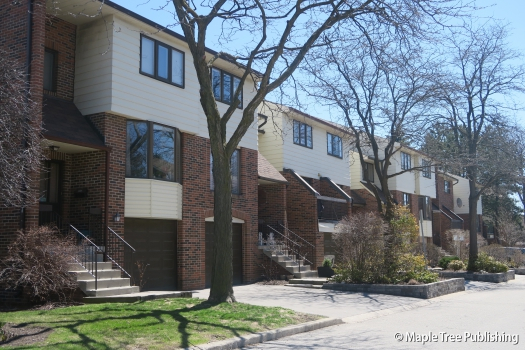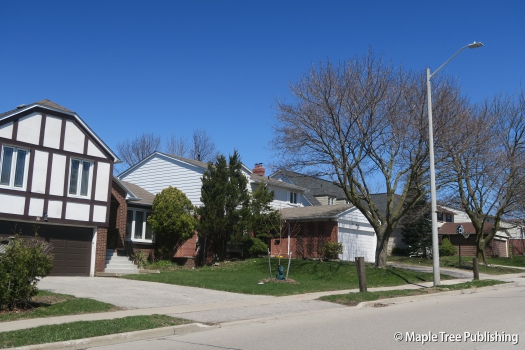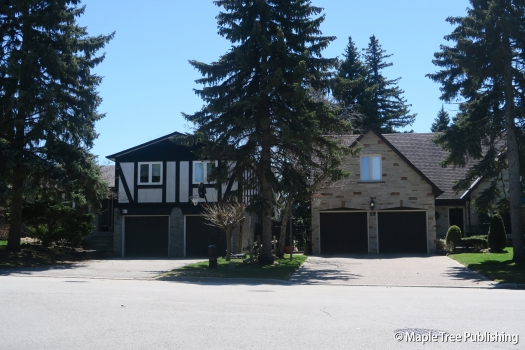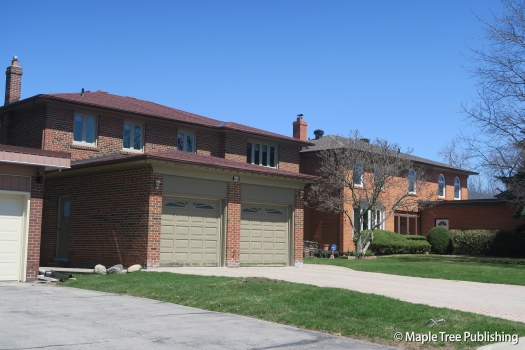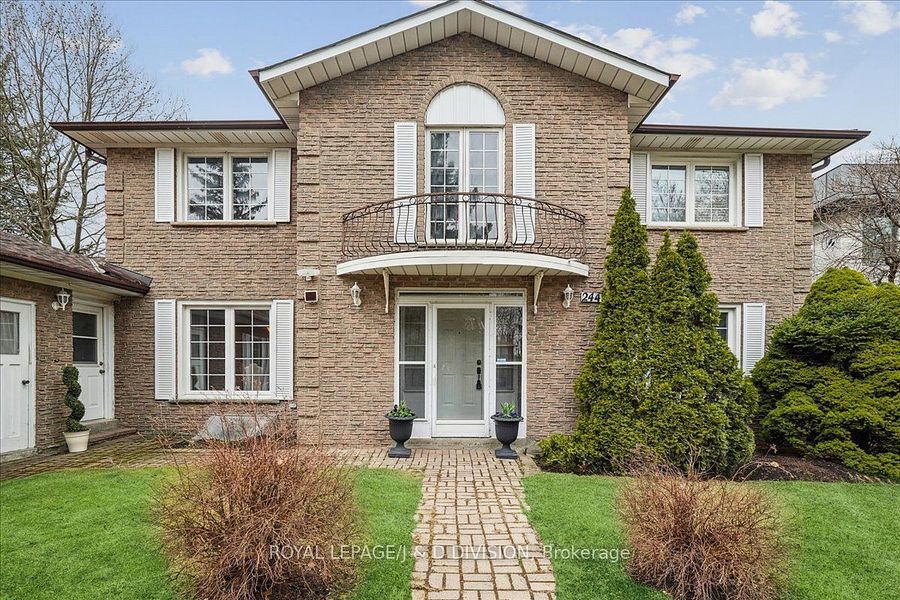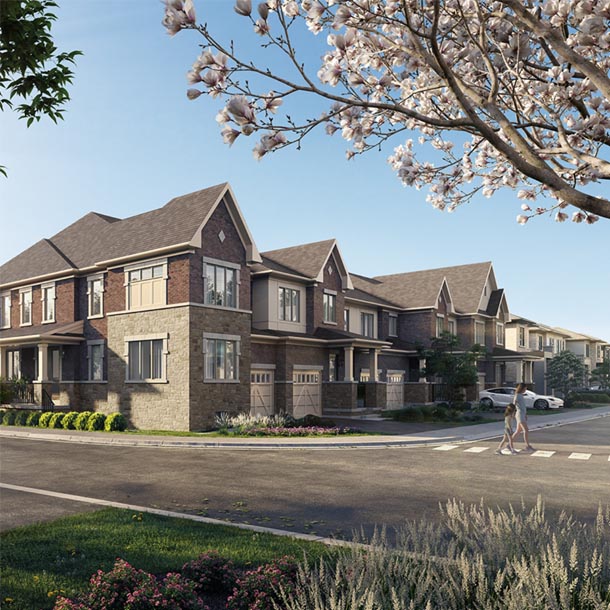German Mills
History:
Markham was originally settled in 1794. The first inhabitants were approximately sixty-four families totalling 186 people in all. These men, women and children were of German descent. They travelled to Markham Township from Upper New York State where they were supposed to be given their own land to farm but instead wound up being tenant farmers. Their leader was William Berczy who learned there were land grants being offered in Upper Canada in exchange for clearing the forest. So off these families went, by foot, led by Berczy in hopes of a better life. Berczy and the hard working pioneers he brought to Upper Canada quickly set about to clear large portions of thick forest for the creation of Yonge Street as well as forging new roadways in Markham Township. In exchange for their hard work the settlers were given land grants in Markham Township. By 1805 these industrious homesteaders had formed their own community called German Mills, with saw, timber and grist mills operating on the banks of the Don River. William Berzcy would move onto to other pursuits including becoming one of the most famous painters in Upper Canada. Despite Berzcy’s absence the German Mills community did not skip a beat under the new leadership of Philip Eckhardt, a man of immense stature and many talents. Under Eckhardt’s guidance and direction German Mills would thrive as an industrial centre, German Mills was known for producing some of the finest flour. Its mills churned out many of the building materials for the Town of York, the forerunner to the City of Toronto. A brewing house, malt house, cooperage, blacksmith shop and tannery were all added to the mix of this busy little hamlet. After ten years Eckhardt moved north to establish the Village of Unionville. Another success story. However; his departure coincided with a decline in industry for German Mills; with the result that the stature and eventually the population of the community fell into decline. However; German Mills would endure and remain relevant for many decades to follow. In 1962 the former German Mills schoollhouse was closed due to dwindling population. Today, that old schoolhouse, situated at 80 German Mills Road, proudly serves as a community centre, serving as bridge and connecting the old German Mills community with the new families that now call this neighbourhood home.
Editors Note: A monument to the original German Mills settlers stands on the south side of John Street and Chestnut Gate.
Overview:
German Mills is a quaint family oriented neighbourhood that provides entry level home ownership opportunities within just a ten minute drive of the City of Toronto. This neighbourhood has a very hilly topography with the elevation noticeably rising as you head north from Steeles Avenue to John Street, The curvi-linear streets in the neighbourhood seem to follow the contours of the land making for some very pretty streetscapes. German Mills is a tight knit community with its own residents association, historic community centre, highly regarded public school, hockey arena and sports fields. German Mills Settlers Park – 26 hectare site was a former sand aggregate extraction (1940s-1960s) Sabiston Landfill c.1960s and closed 1975. Source: Wikipedia. Now this park is a large beautiful meadow and natural habitat that includes the Don River that winds its way south to the City of Toronto.
Homes:
While there are pockets of larger houses most German Mills houses are small detached starter homes with garages at the front. The Tudor revival style is the most prominent architectural style in this neighbourhood with the half timbering accents on the front of the house. There are also numerous enclaves of townhomes in German Mills.
Recreation:
German Mills Meadow and Natural Habitat along with German Mills Settlers Park is the largest greenspace in the neighbourhood occupying a huge swath of land right in the middle of the neighbourhood along the banks of the Don River valley. This park has has a lengthy walking trail that connects with two smaller neighbourhood parks;Bercy (Wycliffe) Park and Simonston Park.
Arts:
The Markham Arts Council supports over 80 organizations and 850 individuals for a total of over 2000 members living and working throughout York Region and Ontario. You don’t have to be an artist to become a member. This organization welcomes people of all ages and all walks of life to join and take part in all the wonderful events, initiatives and activities that the Markham Arts Council has to offer.
